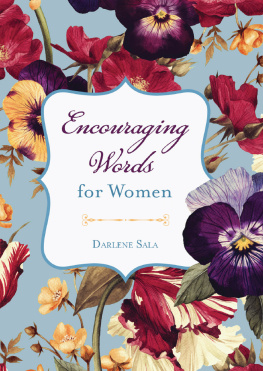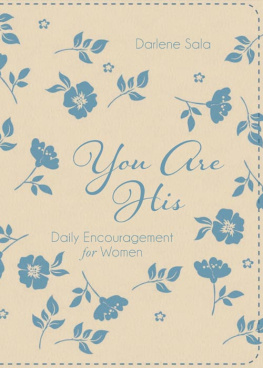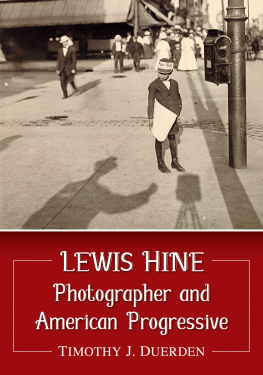1989 by Darlene Clark Hine
All rights reserved
No part of this book may be reproduced or utilized in any form or by any means, electronic or mechanical, including photocopying and recording, or by any information storage and retrieval system, without permission in writing from the publisher. The Association of American University Presses Resolution on Permissions constitutes the only exception to this prohibition.
Library of Congress Cataloging-in-Publication Data
Hine, Darlene Clark.
Black women in white : racial conflict and cooperation in the nursing profession. 18901950 / Darlene Clark Hine.
p. cm. (Blacks in the diaspora)
Bibliography: p.
Includes index.
ISBN 0253327733. ISBN 0253205298 (pbk.)
1. Afro-American nursesHistory. 2. NursingUnited StatesHistory. 3. United StatesRace relationsHistory. I. Title. II. Series.
RT83.5.H561989
362.17308996073dc19 | 8846023 |
CIP |
123459392919089
In loving memory of my father, Levester Clark, and brother, Orlando Stanley Clark
Preface
Since the abolition of slavery, each generation of Afro-Americans has waged a valiant struggle to eradicate the multifaceted manifestations of racism. There have been many casualties and few black victories. For the most part, racism still exists. This study of the successes, and to a limited extent the failures, of black nurses from the 1890s to 1950 is yet another chapter in this seemingly endless confrontation.
Though it is much too simple a definition, in the interest of brevity, I define racism as the system of beliefs and practices promulgated by certain whites to maintain an unequal distribution of power and resources between themselves and black Americans. The central unifying focus of this book is the efforts of Afro-American health-care professionals to assemble an institutional and organizational arsenal with which to combat the racism inside the health-care establishment.
Being the product of a society which views mens work as more important and interesting than womens, and that of subordinate black women as least significant of all, when I first began to study the history of black health-care professionals I focused on physicians, intending to pay only cursory attention to nurses. Gradually, as my research unfolded and I sought to understand the connection between health-care delivery and black morbidity and mortality, my attention shifted almost completely to the nurses.
To understand fully the link between health-care delivery and the albeit minuscule improvement in black health over the past century requires a close examination of the role played by the black nurse. Whereas physicians were trained to treat the specific ailments of the patient as individual, from the very outset nurses were expected to deal with the patient as part of a broader social system. During the course of the training experience in the early black hospital and nursing schools, the student was taught to accord equal significance to preventive care and instruction. Her special sphere, first as a private-duty and then in the 1930s as a public-health nurse, embraced the entire black community. The dependence was mutual. Without the institution-building initiative of black leaders and the material and moral support of the black community, the trained black nurse would not have existed. As a consequence, the black nurse belonged to the community; she labored within and on behalf of the community. This is not to suggest that black medical men were inconsequential in the still-raging war for improved black healthcare delivery. To make such an assertion would be unfair and inaccurate.
Nevertheless, as I grew more familiar with the compelling careers and struggles of several exemplary nurses, most notably Mabel K. Staupers, M. Elizabeth Carnegie, Frances Davis, Eunice Rivers Laurie, and Estelle Massey Riddle, I was persuaded that the first volume in an envisioned multivolume exploration of black health-care professionals had to concentrate on black nurses. And by the end of my research I resolved that this study must have as its central construct the examination of the powerful impact of racism on the nursing experience for black women.
It is not the aim of this book to create new stereotypes or to paint sentimental portraits of the long-suffering, much-exploited, self-sacrificing but heroic black women nurses at the expense of black physicians. Nor is it the intent to make of white nurses racist villains. But it is important to reveal the causes and consequences of the racial conflict that characterized the first half-century of black womens entry into the nursing profession. To its credit, organized nursing, unlike medicine and law, actually proved more willing to remove color bars and to embrace integration in the postWorld War II years. But then, black nurses seemed more determined to raise hell to get what they wantedthat is, to end segregationthan did members of other professions.
In 1950 black nurses voted to dissolve the National Association of Colored Graduate Nurses, a separate professional organization founded in 1908 both to promote their advance and to win integration into the mainstream of American nursing. Once the black nurse leaders achieved the goal of integration, a victory aided by many white nurses and philanthropists and the larger black community, they did what no other black professional or protest organization had ever done: they voluntarily went out of business. Whatever has been the history of race relations in nursing since 1950, the postWorld War II era began with a promise of cooperation in the nursing profession.
This book is part of the ongoing enterprise of nursing-history scholars to develop new interpretations and fresh insights to explain the evolution and transformations of American health care. I have taken many cues from the excellent nursing histories that have appeared in the past decade. I would be remiss, however, not to mention that far too many of the revisionist and pathbreaking works that have opened new vistas for research into the social, political, and economic underpinnings of nursing have failed to incorporate an analysis of race. Bluntly put, all professions look different when viewed from the black womans angle, and even more so when she belongs to the working poor.
In 1910 and 1920 black women constituted less than 3 percent of trained nurses. They were, however, 17.6 and 24.0 percent, respectively, of the total female population. This gross underrepresentation alone suggests much about the structure of the nursing profession and the nature of race relations in the larger society. To ignore black women, however small their numbers, while endeavoring to study the experiences of women in the professions, as well as in other aspects of American life and culture, will continue to yield, at best, partial truths.











